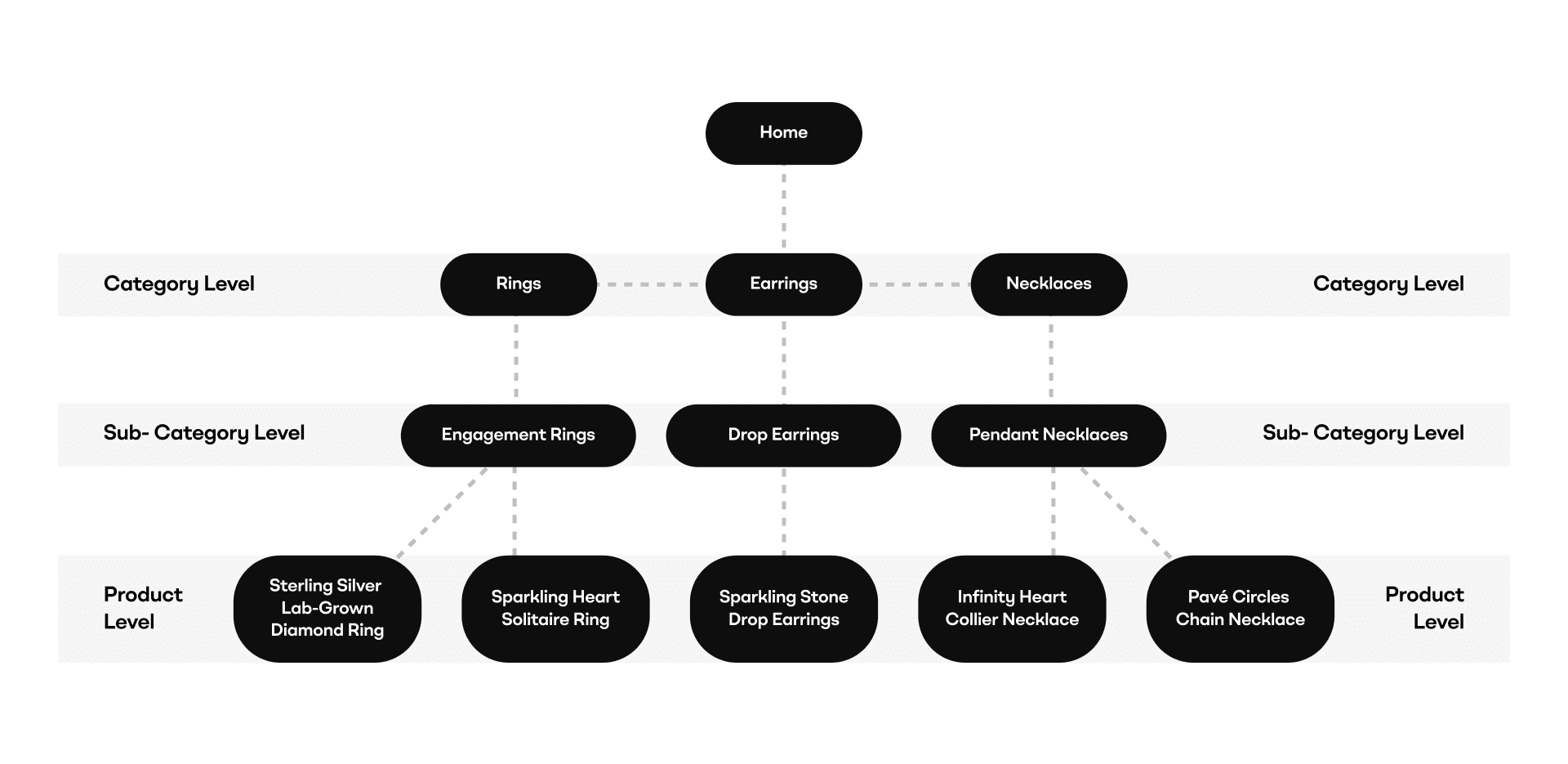Do It Yourself SEO: Simple tips to get results
Written by Kristin Kudeva
If you’re here, you already know the power of SEO for your business, but maybe you’re not ready to hire a professional SEO agency just yet. You’re eager to learn some DIY SEO tips and tricks to get your new site noticed in search results and drive traffic.
We get it. SEO can seem complex, but there are simple steps you can take yourself to boost your site’s visibility.
In this guide, we’ll share 10 straightforward ways to do SEO yourself and make your site more SEO-friendly, helping it rank higher in search results.
What is the purpose of SEO?
SEO, or search engine optimisation, is all about making your website more visible to potential customers in the vast online world. The main goal is to secure top rankings in search results, driving targeted traffic to your site.
However, achieving those top positions requires providing value to users. Search engines like Google use complex algorithms to evaluate websites based on various criteria, favouring those that offer the best user experience.
Key factors include:
- A mobile-friendly interface (64% of searches are carried out on mobile phones).
- Fast-loading web pages (40% of users will also abandon your website if it takes more than three seconds to load).
- Intuitive navigation (94% of consumers say your website must be easy to navigate).
- Original, unique and valuable content (Google is all about delivering ‘optimised’ and quality content to users).
- Good on-page experience (this is measured by metrics such as click-through-rate, bounce rate and dwell time).
- Domain authority (a metric that grades your site’s expertise on a particular topic and its ability to rank on search engines; can be boosted through quality backlinks).
- And more!
Usually, a comprehensive SEO strategy incorporates various tactics to meet the criteria mentioned above and attain organic success. However, for this article, we’ll focus on simple steps you can handle yourself while your website is in its early stages of growth.
By following these steps, you’ll build a strong base for future efforts. Later on, as you have more time and resources, you can dive into more advanced techniques for even better results.
1. Set up key tools.
Before diving into any SEO tasks, it’s crucial to assess your current standing in organic search and establish a baseline to gauge your progress. To do this effectively, you’ll need to set up some essential SEO tools that offer valuable insights into key metrics.
These include:
- Google Analytics: This tool provides comprehensive insights into your website traffic, including where visitors come from, which pages they visit most, and how long they stay. It helps you understand user behaviour and measure the effectiveness of your SEO efforts.
- Google Search Console: With Search Console, you can monitor your website’s performance in Google search results, identify and fix technical issues that may affect your visibility, and see which keywords bring traffic to your site. It also alerts you to any indexing or crawling errors.
- Google Ads Keyword Planner: While primarily used for planning paid advertising campaigns, Keyword Planner can also help you discover relevant keywords for your SEO strategy. It provides data on search volume, competition and suggested bid prices for keywords related to your business.
- Google Business Profile: Formerly known as Google My Business, this tool allows you to manage your business information across Google Search and Maps. By optimising your Business Profile, you can improve your local search visibility and attract more customers to your physical location.
- Google Merchant Center: If you run an ecommerce store, Google Merchant Center is essential for managing product listings and promotions on Google Shopping. Optimising your product data here can enhance your visibility in Google’s shopping results and drive more traffic to your online store.
- Bing Webmaster Tools: Bing Webmaster Tools offers insights into your site’s performance on Bing, much like Google Search Console does for Google search results. It helps you identify and fix issues that may affect your rankings on Bing, Yahoo, and other Microsoft-powered search engines.
- Ahrefs Webmaster Tools: Ahrefs offers a free set of webmaster tools that provide insights into your website’s backlink profile, organic search traffic and keyword rankings. It helps you understand your site’s overall SEO health and identify opportunities for improvement.
Setting up these SEO tools may require some initial research and guidance beyond the scope of this article. However, there are plenty of resources available online to help you get started with each tool.
Simply search for tutorials or guides specific to the tool you’re interested in setting up, and you’ll find step-by-step instructions to help you navigate through the process.
2. Understand your target audience.
Before delving into SEO, it’s essential to have a clear understanding of your target audience. Are you catering to a business-to-business (B2B) or business-to-customer (B2C) model? Each model requires a different approach, including tone of voice and messaging tailored to your audience’s preferences.
To gain insights into your customer base, create at least three buyer personas. These personas should represent the individuals who are likely to purchase from your business. Include details such as age, demographics, interests, purchasing power, social media habits, biggest pain points, doubts and goals.
Let’s say you run a small local bakery which specialises in gluten-free treats. A potential customer persona may look something like this.
Creating personas like Grace will help inform your marketing efforts, including your SEO content strategy.
By aligning your content with your audience’s needs and positioning your brand as the ideal solution for their pain points, you can effectively communicate your unique selling points and stand out in organic search. Remember, effective communication and showcasing your value proposition are key to success in SEO and attracting potential customers to your website.
3. Choose the right SEO keywords .
Finding the right keywords is crucial for SEO beginners, as they not only define your content’s subject but also attract the right audience to it. Start your keyword research by using seed keywords, which are broad terms reflecting your topic. For example, “dress” leads to more specific keywords like “maxi dress” or “prom dress”.
If you have a physical store, include local search terms in your keywords, such as “wedding dresses london.” Research shows that 72% of consumers who perform local searches visit a store within five miles, making local keywords essential for brick-and-mortar SEO.
Utilise tools like Google Ads Keyword Planner to identify relevant keywords with decent search volumes. Typically, head terms such as “dresses” are used in parent page content, while variations with prefixes and suffixes become child pages – e.g. “black dresses”.
For example, Boohoo’s website has a parent category page for “dresses” with sub-pages targeting different dress types based on style, colour, occasion, etc. This comprehensive setup allows them to rank for various competitive search terms, driving significant traffic.

In addition to commercial keywords, consider informational keywords for blog articles on your site. To understand search intent, examine the top 10 organic results on Google for a keyword.
Determine whether the primary type of content in search results is a blog post, product page, video, landing page or something else, and create content accordingly. This approach ensures your content aligns with user intent, improving its SEO ranking potential.
Answer The Public is a fantastic freemium tool for uncovering informational keywords. It provides insights into popular questions people ask about specific topics, helping you understand the common queries and interests within your niche.
4. Examine your site structure.

When deciding on the hierarchy, you may wonder about the optimal number of levels to reach a product page. While the famous three-click rule can be a guide, don’t feel constrained by it. If you need a fourth level in the hierarchy, that’s perfectly acceptable.
A well-structured website architecture not only helps your site rank for head terms which are highly competitive, especially for ecommerce websites where category pages are crucial, but it also enhances usability. Excellent usability and content contribute to a superior user experience, leading to increased dwell time (the time a searcher spends on a page before returning to the search engine results pages) which is beneficial for SEO. The longer this time, the better it is for your SEO.
So, leverage the insights from your earlier keyword research to organise your site’s information architecture logically. Establish a hierarchy that links related content in a cohesive manner, prioritising the most competitive terms as parent pages.
5. Create SEO-friendly content.
When crafting content for your website, quality is key. Google prioritises well-written, grammatically correct content that provides valuable information to readers. Make sure you’re familiar with Google’s guidelines on creating helpful, reliable, people-first content.
Start by identifying the primary keyword for each page and incorporating it naturally into the title and body of your content. However, remember that keyword stuffing won’t suffice. Your content must genuinely address the needs of your target audience and offer valuable insights or solutions. Use your customer personas as a guide to identify the primary angle for your content, ensuring that it resonates with your audience’s interests and preferences.
Google now recognises the intent behind search queries and prioritises relevant and informative content. Therefore, aim to cover topics comprehensively while maintaining uniqueness. Avoid duplicating content from top-ranking pages, as this diminishes your chances of standing out and attracting valuable backlinks.
To make your content stand out, consider incorporating personal experiences, expert interviews, crowd-sourced opinions, original research findings or contrarian viewpoints. Unique content not only enhances your SEO but also encourages engagement and sharing.
Additionally, readability is crucial for both SEO and user experience. Keep your language simple, avoid jargon and utilise formatting tools like bolding, italics and lists to break up text. Including multimedia elements such as images, videos and GIFs further enhances clarity and engagement.
To optimise your content for search engines, follow these best on-page SEO practices:
- Use the primary keyword in the title tags and meta descriptions to improve visibility in search results.
- Craft compelling meta descriptions that entice users to click on your link.
- Create short, descriptive URLs that accurately reflect the content of your page.
- Add alt text to images to help search engines understand their context and improve accessibility for users
Before publishing, ensure your content is error-free by using a grammar checker and structuring it with headers for easy readability.
By adhering to these guidelines and creating high-quality, SEO-friendly content, you can enhance your website’s visibility, attract more organic traffic, and better serve your target audience. Consistency is key, so make it a habit to regularly publish fresh content and update existing content. This ongoing effort will steadily improve your website’s performance.
6. Build internal links.
Internal linking plays an important role in enhancing the organic search visibility of crucial pages within your website. Google’s algorithm evaluates the importance of each page, in part, based on the number of internal and external links pointing to it.
If you’ve established a well-structured information architecture, you’re already ahead in this regard. For example, pages without incoming internal links (so-called orphan pages) may not be easily accessible to search engines for crawling and indexing. This lack of internal links can result in diminished perceived value for those pages, unless they receive significant external links.
Conversely, pages that do not link out to other internal pages can lead search engine robots into dead-ends, hindering their ability to explore and index your site comprehensively. To tackle this, an internal linking strategy may involve showcasing content widgets like “Related,” “Top,” and “Popular,” and ensuring that key pages are readily accessible from the main navigation or just a click or two away. This helps prevent dead-end pages and ensures a seamless user experience.
To optimise internal linking effectively, start by diagnosing your current linking structure. You can use a tool like Google Search Console for this. The Top Linked Pages report on GSC shows you which pages on your site get linked to the most. Pages with lots of internal links are the big bosses of your site. Usually, the largest “link hubs” on most sites are the homepage and the category pages linked from the primary navigation. If you see other pages getting more links than your main pages, that could be a sign of a problem.
Next, look at the words people click on to go from one page to another on your site – the so-called anchor text. You want these words to match what the page is about. For example, if you’re linking to a page about dog food, it’s better to use words like “healthy dog food” than just “click here.” This makes it clearer to Google what the page is about.
And don’t forget to fix any broken links you find. These are links that don’t go anywhere when clicked. They’re bad for users and bad for Google. Tools like Ahrefs Webmaster Tools can help you find and fix them.
By keeping your internal linking strong and fixing any broken links, you’ll help Google understand your site better and improve your chances of showing up higher in search results pages.
7. Attract more backlinks over time.
Backlinks are like recommendations from other websites, and they’re super important for your site’s off-page SEO. They tell search engines that your site is trustworthy and worth showing to people. So, how do you get them?
Well, one way is by getting people in your industry to link to your site. You can do this by creating awesome content that they’ll want to share with their readers or followers. Sharing your content on social media can also help get more eyes on it, which can lead to more backlinks.
Another strategy is guest posting, where you write articles for other websites in your industry and include a link back to your site. This not only gets you a backlink but also helps you establish yourself as an authority in your field.
And don’t forget about creating high-quality content on your own site. When your content is valuable and useful, other websites are more likely to link to it, boosting your backlink count.
If you’re new to link building, these strategies are a great starting point. Remember, building backlinks requires patience and hard work, but the results are worth it. Improved SEO and increased website traffic are just some of the benefits you’ll reap in the long run. Keep at it, and you’ll see the rewards!
8. Track your progress.
You’ve made significant progress in laying down strong foundations for your SEO efforts. Now, it’s essential to monitor your performance to ensure your strategies are yielding results. Here are some key metrics you should track:
- Organic Traffic: This includes all non-paid clicks from search engines. An upward trend in organic traffic indicates that your DIY SEO efforts are effective. You can track this metric using Google Analytics.
- Organic Impressions & Clicks: Impressions show how often your pages appear in organic results, while clicks represent the number of times users actively select your link. Monitor improvements in both metrics over time using Google Search Console.
- Keyword Rankings: Keep an eye on your organic ranking positions for targeted keywords. A free tool like Ahrefs’ Rank Checker can help track keyword rankings over time. Create a spreadsheet to document changes in rankings, with columns for Target Keywords (list of keywords you’re tracking), Initial Rank (the ranking position of each target keyword before any optimisation efforts begin), and [Month 1] Rank, [Month 2] Rank, [Month 3] Rank and so on.
- Referring Domains: This refers to the number of websites linking to your site. Backlinks are crucial for SEO, so you’ll want to increase the number of referring domains over time. Use Ahrefs Site Explorer to see how many referring domains your site has and how this is changing over time.
By regularly monitoring these metrics, you can assess the effectiveness of your SEO strategies and make adjustments as needed to continue driving success. It’s recommended to check your SEO performance on a monthly basis. Checking more frequently might be premature, as SEO typically takes time to yield noticeable changes and improvements.
Final words.
Navigating SEO as a small business owner without the budget for professional support can feel overwhelming, but it’s entirely within your reach with the right approach. By implementing the simple yet impactful strategies outlined in this guide, you can lay a solid foundation for your website’s SEO performance and gradually improve its visibility on search engines.
Remember, Rome wasn’t built in a day, and the same applies to SEO success. Consistency is key, so continue taking small but meaningful steps towards optimisation, and over time, you’ll see significant results.
However, if you’ve already implemented these strategies and you’re still not seeing the progress you hoped for, or if you have any uncertainties about any aspect of SEO discussed here, don’t hesitate to reach out to our team.
Unsure where to start?
We offer a free consultation to help you identify the most significant SEO opportunities for your business and can assist you in leveraging them effectively.
Latest insights.
Stay connected with Scoot. Read the latest insights from our team on the industry, the studio and what we’re delivering for our clients.



